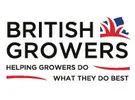After the hottest summer for almost 100 years many parts of the UK are in drought conditions and the North East, South West, Central and East of England have been declared to be in drought conditions by DEFRA. Most of the UK’s vegetables are grown in Lincolnshire and East Anglia on the east coast, the South West and West Midlands and in Scotland.
“The drought has affected different areas in different ways. Lincolnshire and East Anglia have been worst hit with temps of 40 degrees, these areas produce the biggest volumes of brassicas,” said Jack Ward, CEO of British Growers Association.
“Growers have been hit twice, firstly during the height of the growing season in June and July and then during the planting of the winter crops for harvest in December – March. Crops start to suffer above 28 degrees so with temperatures reaching 40 degrees in Lincolnshire couple with prolonged spells with no rain, crops have been badly affected. Yields are already 25-30% down in some areas, and overwintered crops could also be impacted.”
Stagnant prices
It has been a very tough few years for growers with increasing costs, and spiralling costs in the last nine months but the price of vegetables on the shelves have not seen a corresponding increase to cover the additional production cost. In some cases vegetables are, cheaper now than they were five years ago. For example carrots were 60p per kg in 2017, now they cost 45p per kg, back in May they were just 40p per kg. Broccoli is the same per kg as it was in 2017. Retailers are also selling more value packs now.
“It has been getting progressively more difficult over the last 5 years as retailers compete for market share. Brassica production is likely to be down by 20% this season. The lack of viable returns from vegetable production is a real concern for growers and is undermining confidence to invest and innovate for the future. Growers recognise that retailers operate in a highly competitive environment but to ensure we have a robust and resilient vegetable supply base in the future, there needs to be fresh thinking on the way growers are rewarded."
Investing in future production
Climate change is also paying an increasingly important part in our food supply. We are seeing increasingly volatile weather conditions which growers and retailers need to factor into their future plans. The industry needs to prepare for more extreme weather conditions, but which ones? Drought, too much rain, frost?
"We have seen everything in the last 5 years. The current model is not sustainable or viable and we cannot always rely on European imports either, with so many of the producing countries in Europe also in severe drought conditions.”
 For more information:
For more information:
Jack Ward
British Growers Association
jack.ward@britishgrowers.org
britishgrowers.org
